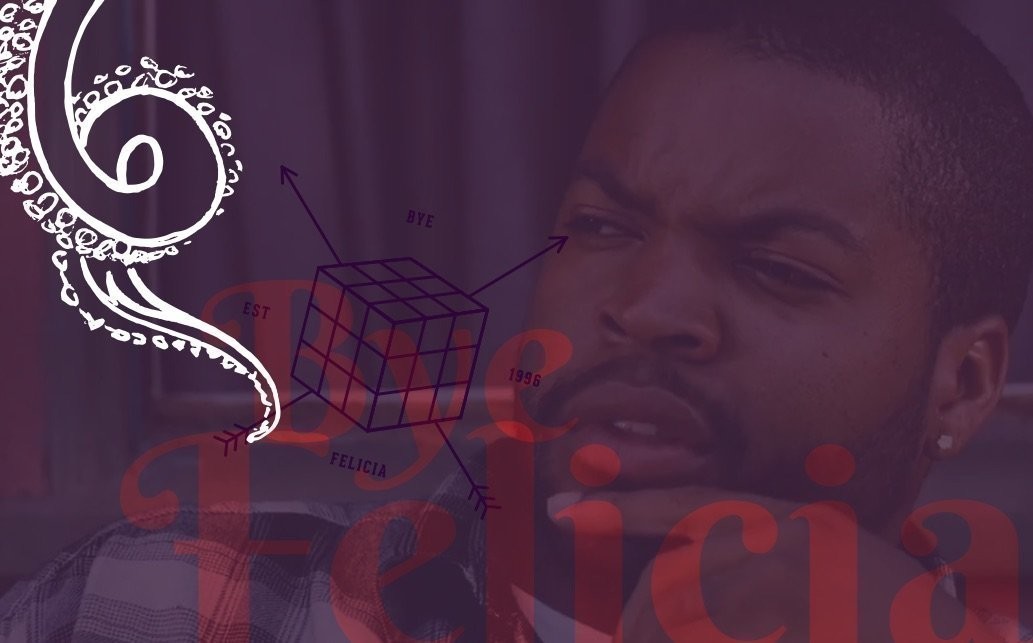Perms. Leg warmers. Rubik’s Cubes.
Inflatable furniture. Spice Girls. The Macarena.
Trends define whole cultural eras, but let’s be honest—they’re kinda weird. How do we, collectively and subconsciously, decide when something is in? And how is it that we all seem to get tired of it at the same time?
Why are we like this?

Regardless of the whys and weirdness of it all, it’s important to know how and when to put trends to work for your brand. Designing with trends can be tricky; they can be your best friend one moment and your worst enemy the next—like that girl Felicia who backstabbed you at summer camp. One of a designer’s most vital skills is knowing when to use a trend and when to just say “Bye Felicia.”
Jumping on the Trend Train
Trends can be super helpful because they’re an easy way to ensure your design will resonate with the current aesthetic climate. However, don’t click your mouse finger around all willy-nilly, going ham on every trend. The key is to strike the right balance of being on trend without being faddy.
Two big trends right now are handwritten fonts and hyper-colorful gradients—it’s like the 90s all over again. It’s easy to foresee handwritten fonts living a good, long life; they require skill to make and harken back to the golden age of advertising. But gradients, despite how fun they are, likely won’t enjoy the same shelf life. The more bold and out-there a trend is, the faster it seems to show its age.

To Trend or Not to Trend?
It is a good question. While you should be selective about executing a trend in a design project, how do you know whether you should use one at all? Trends become trends because people like them. But our role as professional designers and creators isn’t to fit brands into something we know people will like. Our job is to make an authentic identity that represents the brand in a way that will resonate. Don’t bend the brand to suit the people. Bend the people to suit the brand.
My point here is to remind my fellow creatives that, although it is tempting, don’t force a trend into a project where it doesn’t belong. Right now, the fun gradient trend is in vogue, and you may want to use it a lot. That’s fine. But it probably doesn’t belong on an ad for, say, low risk investment programs, because it will come across as forced and disingenuous, just like Felicia’s apology.
Abort Mission
There are definitely times that you shouldn’t succumb to the allure of the trend. If everyone is putting a hipster arrow logo on their brand, should you? Instead of following the pack, do the right thing for the brand and find another outlet for your obsession with all things tribal.
Remember when “on fleek” was cool? Now the only person who still says it is Felicia, and she sounds ridiculous. That’s the thing about trends—it’s hard to know something has gone out of fashion when you’re still using it.

Even though trends are powerful and captivating, by definition, they go away. A trendy approach may make your project feel relevant, but it could also doom it to the same fate as inflatable furniture and slap bracelets.
All in all, trends are really just another tool in the designer’s toolbox—another source for inspiration. They can be used to make something, fix something or even break something. Unfortunately, they can’t be used to repair my relationship with Felicia. RIP.

